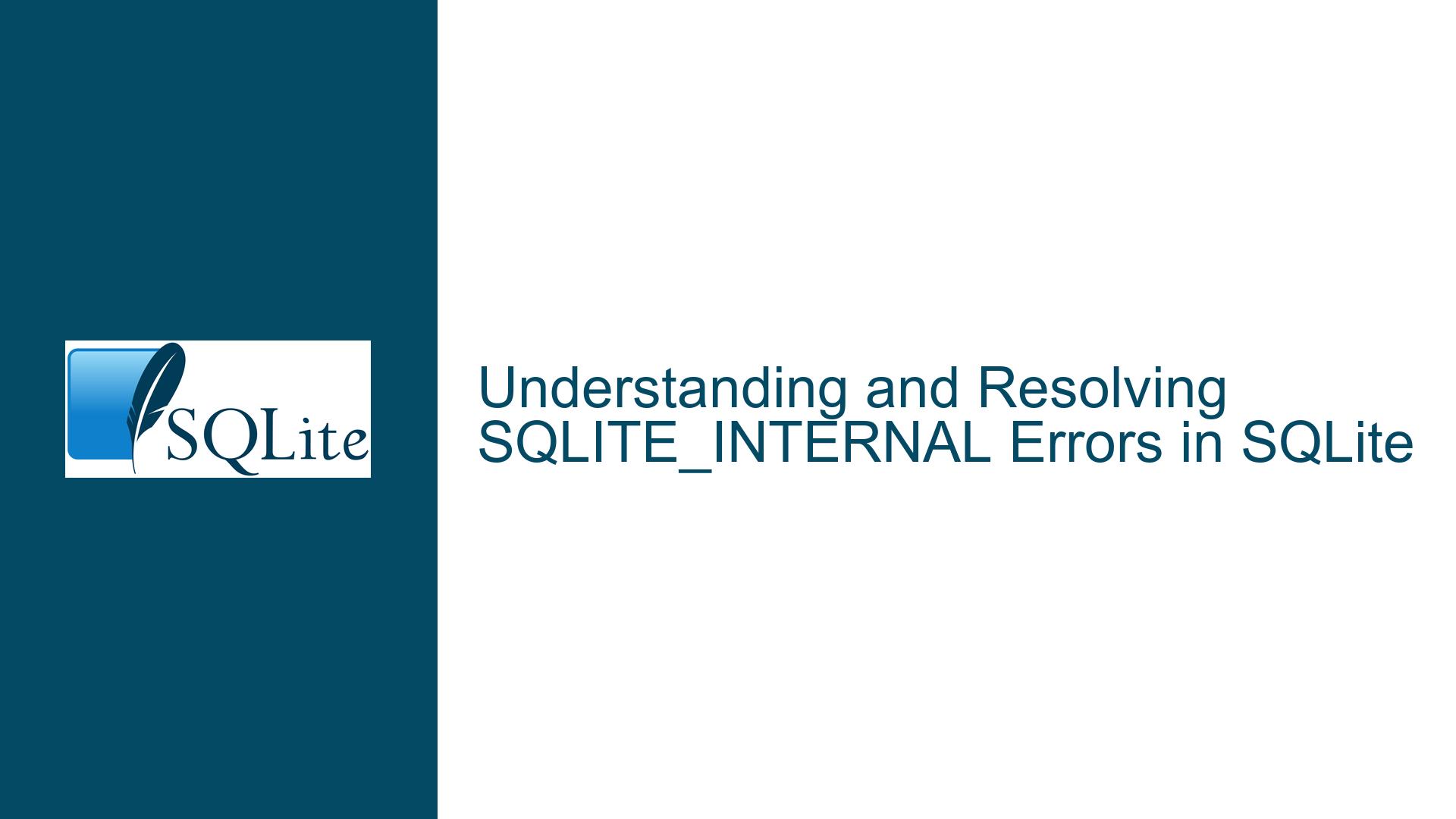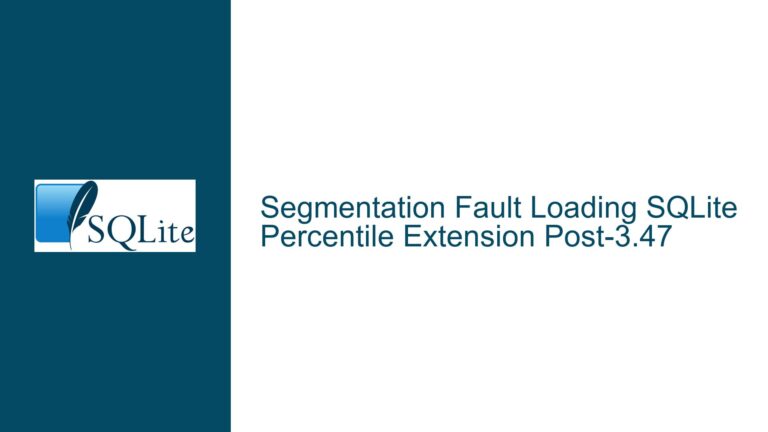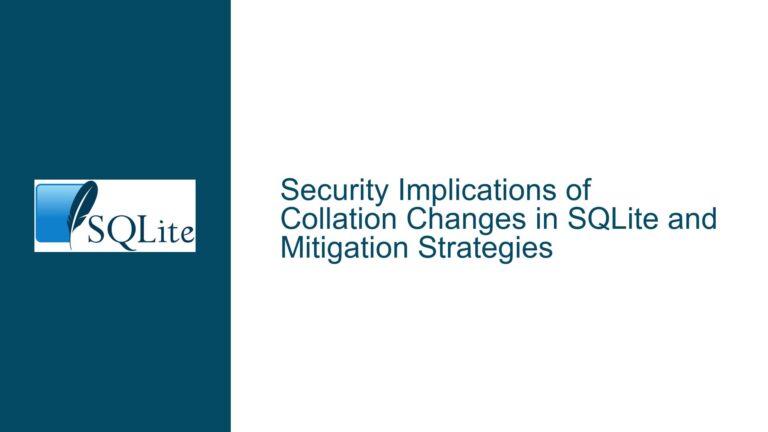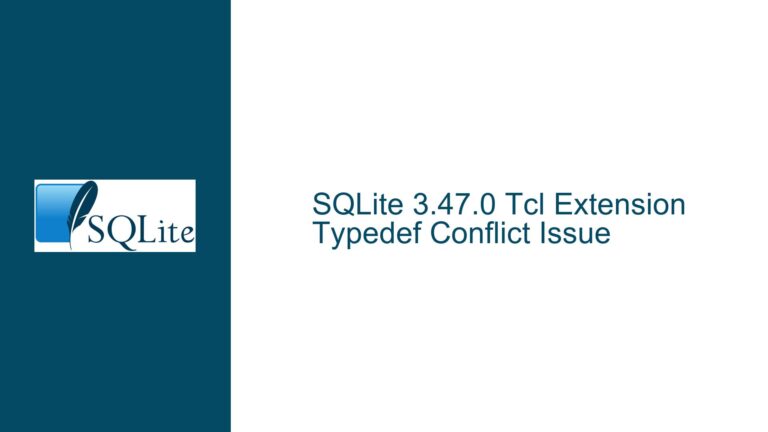and Resolving SQLITE_INTERNAL Errors in SQLite
SQLITE_INTERNAL: A Deep Dive into Its Nature and Implications
The SQLITE_INTERNAL error code is one of the most enigmatic and least understood aspects of SQLite. It is described in the official documentation as an indicator of an internal malfunction within the SQLite engine. This error code is not supposed to appear in a properly functioning version of SQLite, and its occurrence typically suggests a bug in the database engine itself. However, the documentation also notes that this error code is not currently generated by SQLite under normal circumstances. Instead, it may be triggered by application-defined SQL functions, virtual tables, VFSes (Virtual File Systems), or other extensions. This raises several critical questions: Is SQLITE_INTERNAL a transient error that can be resolved with a simple retry, or is it a fatal error that necessitates drastic measures such as recreating the database? How can we confirm the nature of this error and determine the appropriate course of action?
The Ambiguity of SQLITE_INTERNAL and Its Implications
The ambiguity surrounding the SQLITE_INTERNAL error code stems from its ill-defined scope. Unlike other SQLite error codes that have clear triggers and resolutions, SQLITE_INTERNAL is a catch-all for internal malfunctions that do not fit neatly into other categories. This lack of specificity makes it challenging to determine whether the error is transient or fatal. A transient error is one that occurs temporarily due to some external or internal condition and can be resolved without any long-term consequences. For example, a temporary file lock or a brief network interruption might cause a transient error that can be resolved by retrying the operation. On the other hand, a fatal error indicates a more serious issue that cannot be resolved without significant intervention, such as corruption in the database file or a bug in the SQLite engine itself.
Given the ambiguity of SQLITE_INTERNAL, it is not possible to make blanket conclusions about its nature. The error could be transient in some cases and fatal in others, depending on the underlying cause. For instance, if the error is triggered by a bug in an application-defined SQL function, it might be possible to resolve the issue by fixing the function and retrying the operation. However, if the error is caused by a deeper issue within the SQLite engine or the database file itself, it might be necessary to recreate the database or take other drastic measures.
Investigating SQLITE_INTERNAL: Steps to Diagnose and Resolve the Error
When faced with an SQLITE_INTERNAL error, the first step is to investigate the context in which the error occurred. This involves examining the specific operation that triggered the error, the state of the database at the time of the error, and any relevant logs or diagnostic information. The goal is to identify the root cause of the error and determine whether it is transient or fatal.
One approach to diagnosing SQLITE_INTERNAL is to examine the call stack or trace the execution of the SQLite engine at the time of the error. This can provide insights into the specific function or operation that triggered the error and help identify any potential bugs or issues. If the error is triggered by an application-defined SQL function or virtual table, it may be necessary to review the code for these components and look for any potential issues. For example, a bug in a custom SQL function might cause the function to return an invalid result or crash the SQLite engine, leading to an SQLITE_INTERNAL error.
Another important step is to check the integrity of the database file. SQLite provides several tools for checking and repairing database files, including the sqlite3 command-line tool and the PRAGMA integrity_check command. Running an integrity check can help identify any corruption or other issues in the database file that might be causing the error. If the integrity check reveals problems with the database file, it may be necessary to restore the database from a backup or recreate it from scratch.
In some cases, the SQLITE_INTERNAL error might be caused by an issue with the underlying file system or storage medium. For example, a failing hard drive or a corrupted file system might cause data to be written incorrectly to the database file, leading to an internal error. In such cases, it may be necessary to check the health of the storage medium and repair any issues before attempting to use the database again.
If the error persists after investigating the context, checking the database integrity, and examining the storage medium, it may be necessary to consider more drastic measures. This could include recreating the database, updating to a newer version of SQLite, or seeking assistance from the SQLite community or support team. In some cases, the error might be caused by a bug in the SQLite engine itself, and updating to a newer version of SQLite might resolve the issue.
Conclusion: Navigating the Uncertainty of SQLITE_INTERNAL
The SQLITE_INTERNAL error code is a complex and ambiguous aspect of SQLite that requires careful investigation and diagnosis. Its occurrence typically indicates an internal malfunction within the SQLite engine, but the specific cause and nature of the error can vary widely. In some cases, the error might be transient and resolvable with a simple retry, while in others, it might be fatal and require more drastic measures such as recreating the database.
When faced with an SQLITE_INTERNAL error, it is important to approach the issue methodically and thoroughly investigate the context, database integrity, and underlying storage medium. By taking these steps, it is possible to determine the root cause of the error and take appropriate action to resolve it. While the ambiguity of SQLITE_INTERNAL can make it challenging to diagnose and resolve, a careful and systematic approach can help navigate the uncertainty and ensure the continued reliability and integrity of the database.






